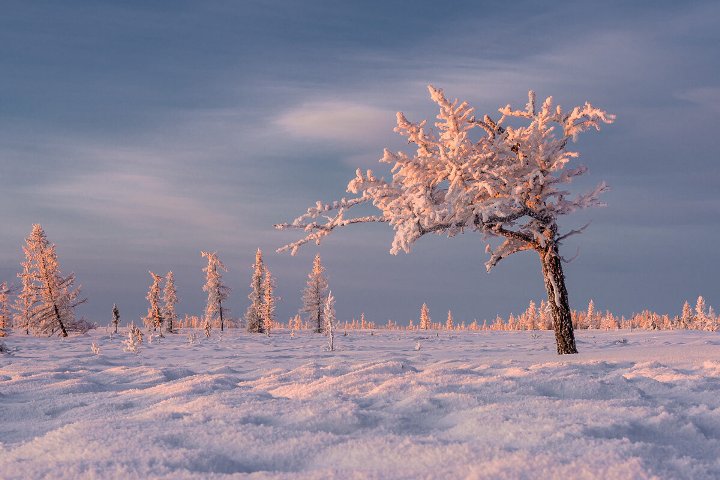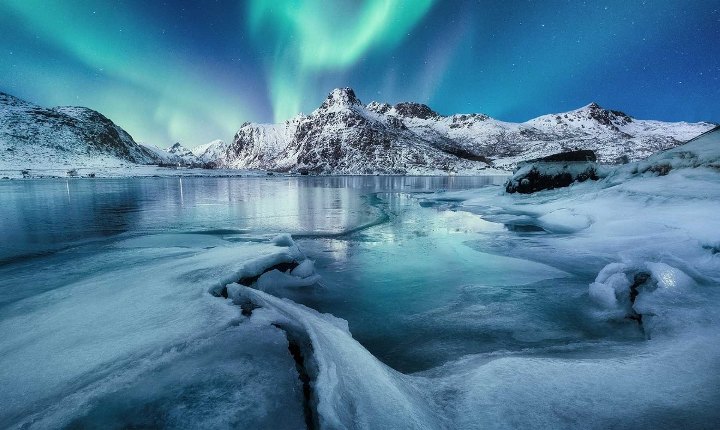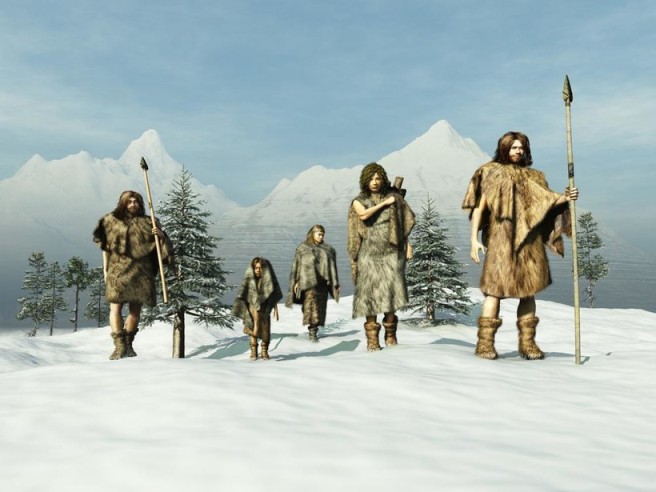A new study shows just how important the ozone layer is to the living world. Without it, the planet would be 3.5° colder than it is today, and temperatures would approach ice age levels. In this case, the amount of carbon dioxide would remain unchanged. According to the authors of the work, the main effect of ozone deficiency will be cooling of the upper layers of the stratosphere. Colder air cannot hold as much moisture, so the stratosphere will become drier. Water vapor is an important greenhouse gas, so without it the Earth’s overall greenhouse effect would be reduced.
The article was published on the arXiv preprint server, Planet Today reports. To study the effects of the ozone layer, the researchers used a set of Earth climate models. They varied the amount of ozone in the upper atmosphere and allowed the Earth’s temperature to reach equilibrium. The presence of ozone was found to cause warming: on average, the temperature at the Earth’s surface increased by about 3.5°. If the ozone layer were to disappear, whether caused by humans or otherwise, it would have catastrophic consequences for all life on the planet.
The lack of ozone and the resulting cooling of the stratosphere also destabilizes this layer of the atmosphere, preventing the formation of clouds. This will “force” clouds to appear only at lower and higher altitudes. In addition, some jet streams near the equator will strengthen, while others near the poles will weaken. This would have serious consequences for seasonal weather conditions at all latitudes. Therefore, preserving the ozone layer is extremely important for the balance of energy in the atmosphere and protecting the climate of our planet.

In turn, the head of the Russian Ministry of Natural Resources, Alexander Kozlov, noted that “we are in an interglacial period.” The Earth is in the middle of an interglacial period and still has about 10,000 years of relatively warm climate ahead. This was stated by the Minister of Natural Resources and Ecology of the Russian Federation Alexander Kozlov on Sunday at the ceremony of putting into trial operation the new wintering complex (NZK) of the Vostok station in Antarctica.
Vladimir Lipenkov, head of the laboratory of climate change and environment of the department of geography of polar countries of the Arctic and Antarctic Research Institute of Roshydromet, added that “anthropogenic impact may aggravate the situation, and the temperature will be slightly higher than what is comfortable and which we would like to have.” As Lipenkov emphasized, it is the ice cores – samples taken in Antarctica – that make it possible not only to restore the climate history of the Earth, but also to study the mechanisms of climate change.
In just the last 2.6 million years, the planet has experienced at least 50 ice ages, with warmer interglacial periods in between. The cycles of ice ages and interglacials had a period of 100 thousand years: the glacial lasted 70-90 thousand years, the interglacial – about 10 thousand. Interglacials occur when the Earth comes closest to the Sun during summer in the Northern Hemisphere. During the summer, much of the sea ice in the northern ocean melts, and the dark seawater absorbs the sun’s rays well.
And while the cycle of changes in the elongation of the orbit in which our planet orbits the Sun is considered the main factor determining glacial and interglacial cycles, new research has shown that they may instead be the result of a change in the tilt of the Earth’s rotation on its axis.

The authors of the publication in the journal Nature Geoscience concluded that in fact it was precession, the change in the tilt of the Earth’s axis of rotation, that most influenced glacial cyclicity in geological history. These conclusions are based on oxygen isotopes (the same element with different atomic masses) in the shells of marine organisms. Warmer conditions cause lighter oxygen-16 to evaporate faster, leaving the water richer in heavier oxygen-18, which is then incorporated into the shells of organisms living in the ocean.
The study’s lead author, Dr Chronis Tsedakis from University College London (UK), and his team analyzed sediment cores from the Mediterranean Sea and found that the timing of the end of the Ice Age coincided with changes in the tilt of the Earth’s rotation axis. They also conducted computer simulations of the impact of changes in orbital eccentricity and axis tilt on our planet’s climate. Microscopic foraminifera are found in sediment cores obtained from the deep ocean, with analysis of data from the late Pleistocene revealing a distinct rapid decrease in the 18O/16O ratio, indicating changes in deep-sea temperature as a result of fluctuating ice volumes.
Dating of orbital changes was based on records of speleothems (mineral deposits in caves; calcite stalactites are an example) from China. Authors of past studies have found that climate changes in the North Atlantic quickly spread to monsoon regions, with glacier retreat corresponding to weaker monsoons, and therefore the formation of speleothems (dependent on global monsoon activity) can be considered synchronized with the data.
The findings have important implications for understanding past and future climate change. “Our research shows that Earth’s axial tilt is a critical factor in determining Earth’s climate, and that changes in it can have a significant impact on the planet’s climate,” Dr Tsedakis said.
To survive the Ice Age, ancient people relied on coastlines. An international team of scientists has shown that people lived continuously on the east coast of South Africa from 35 thousand to 10 thousand years ago. The researchers also managed to reconstruct the living conditions of the coastal population. The idea that our distant ancestors “waited out” the cold near the sea and ocean shores is not new. After all, people could find food there; in addition, the coastal climate is always milder than in the interior of the mainland.
Through extensive study of the sites, scientists have documented direct evidence that people foraged for food on the African coast during the Glacial Maximum. Experts also found traces of fishing for fish, shellfish and other coastal and marine organisms, as well as plant collection. Many types of edible vegetation presumably persisted on the coast, but due to cooling they disappeared inland. Many animals disappeared along with them, so hunter-gatherers had no choice but to look for food on the coast, where an “island” of former warmth remained.





